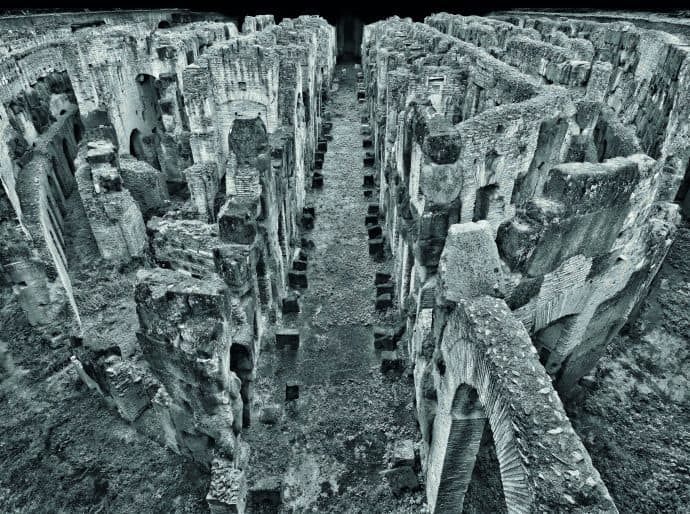The Colosseum tells its own story for the first time in a major exhibition.
From March 8, 2017, to March 11, 2018, in the ambulacrum of the second order, the millions of visitors to the Flavian amphitheater will be able to explore the whole history of the monument. The event Colosseum. An Icon goes beyond recounting its history under the Caesars to retrace the site’s long and intense life over the centuries.
From the bustling yet little-known commercial, residential and religious activities that characterized the Colosseum in the Middle Ages to the fascination exerted over the great architects and painters of the Renaissance. Then from its transformation into a mythical place of martyrdom, beginning in the sixteenth century, the setting for the ritual of the Via Crucis, to its ascendancy from the eighteenth century on as the favored destination of the Grand Tour by poets, writers and painters. It was turned into a romantic place of the imagination, with dreamers in the moonlight and daring visitors dying of malaria transmitted by the mosquitoes that proliferated in its recesses. The late eighteenth century saw its archaeological rediscovery, excavation and restoration, leading to the construction of the great spurs that still shore up the structure. With the advent of fascism, the Colosseum once again became, as in olden times, the ideological setting for displays of power. In the postwar period there grew up a new myth of the Colosseum: the Flavian Amphitheatre burst into the cinema with sword-and-sandal movies and the masterpieces of Italian neorealism, while Roman Pop Art consecrated it in the role of an icon, which it continues to perform seamlessly to this day. Even contemporary art continues to recount the history of the monument, an emblem of the city and of Italy, in paintings, installations, performances, videos and photographs by internationally renowned artists.

Il Colosseo e l’Arco di Costantino anni trenta del XVIII secolo
Courtesy Antichità Alberto Di Castro, roma

Veduta a volo d’uccello del Colosseo
Roma, Fondazione Besso

Harbin, China, 2010
© Olivo Barbieri
The Special Superintendency for the Colosseum and Rome’s central archaeological area, with Electa, is promoting this exhibition about the life of the monument enriched with the previously unpublished results of recent excavations and restoration work, confirming the evidence of archival documents about the medieval period: the Colosseum teemed with life, crypts, churches, shops and workshops, the mansions of great aristocratic families and humble dwellings, which found and built new spaces amid its leafy arches and high vaults.
Twelve sections arranged in chronological order reveal the historical and cultural influence of the amphitheater in the most diverse fields: from painting to restoration, architecture urban planning, entertainment, literature, sociology and politics. Over time, the monument has become an outstanding symbol of eternity and power, civilization and culture. Still making international headlines today, the Colosseum lives
in the collective imagination, not just of Italians but the world: its myth continues.
source: press release

Till 11 March 2018
The Colosseum
Opening Hours
8.30 am – 5 pm March 8–15
8.30 am – 5.30 pm March 16–25
8.30 am – 7.15 pm March 26–August 31
8.30 am – 7 pm September 1–September 30
8.30 am – 6.30 pm October 1–28
8.30 am – 4.30 pm October 29 2017–7 January 2018
Admission charge
Full € 12.00; reduced € 7.50 including the exhibitions
held in the archeological area of the Roman Forum–
Palatine–Colosseum.
Information and guided tours
tel. +39.06.39967700
www.coopculture.it




